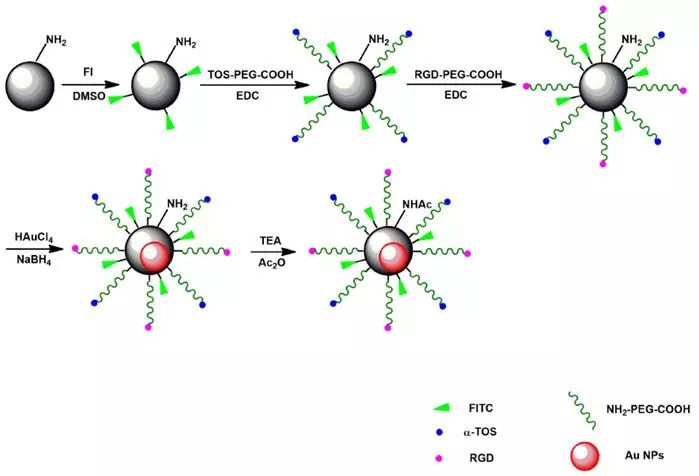In view of the local invasiveness and remote metastasis characteristics of malignant tumors, the treatment effect and treatment cost of cancer is closely related to the period when the cancer is discovered.
Therefore, early detection and early treatment are effective methods to reduce cancer mortality.
The development of nanotechnology now makes us strive to build a nanosystem that integrates early diagnosis and treatment of cancer so that it can simultaneously load imaging reagent molecules and drugs, and efficiently deliver them to the lesion site through the nanocarrier. Using imaging reagents to display and monitor the lesion site, molecular drugs implement effective therapeutic effects.
With the help of a functional nanosystem, an organic combination of diagnosis and treatment can be achieving cancer diagnosis integration.
Many scientific researchers use various nano-carriers to construct nano-hybrid treatment systems. Commonly used carriers include liposomes, dendrimers, polymer micelles, polymer vesicles, and inorganic nanoparticles(Au/Ag/Si/Fe3O4/CdSe), etc.
Dendrimers are widely used in the field of biomedicine due to their precise core, internal space, surface functional groups, and good physical and chemical properties.
At the same time, it has the best water-solubility and biological compatibility and can be removed from the blood by the kidneys, so it does not need to be biodegradable.
Due to dendrimers’ unique structure, they can be modified and functionalized on their surface functional groups, which can not only improve the solubility of materials, but also make them tumor-specific, cance cell therapy, gene therapy and other effect through connecting targeting molecules and drug molecules.
The internal cavity structure can physically wrap metal nanoparticles and molecular drugs, and the nanocomposite structure formed by it has good stability and does not cause aggregation. Due to its unique physical and chemical properties, it becomes a new carrier material for bio-nanomedicine and has good application prospects.
The team of Donghua University Shi Xiangyang developed a gentle way to synthesize functionalized α-TOS covalently bonded Au DENPs for targeted cancer diagnosis and treatment.
Through dendrimer nanotechnology and PEG chemical modification methods, functionalized α-TOS covalently bonded Au DENPs can be synthesized. The formed gold nanoparticles are spherical, relatively homogeneous in size, and have good stability under different pH, temperature, and solvent conditions.
RGD-targeted α-TOS covalently bonded Au DENPs have high anti-cancer efficiency in vitro, which is caused by stimulating cancer cells to produce more ROS.
The most important is the targeting agent FA or RGD modified α-TOS covalently bonded Au DENPs, which can specifically bind to cancer cells expressing the corresponding receptors and can achieve in vitro CT imaging of targeted cancer cells.
The Au-TOS-FA DENPs synthesized in this work can achieve effective targeted tumor CT imaging and treatment in vivo.
Reference




